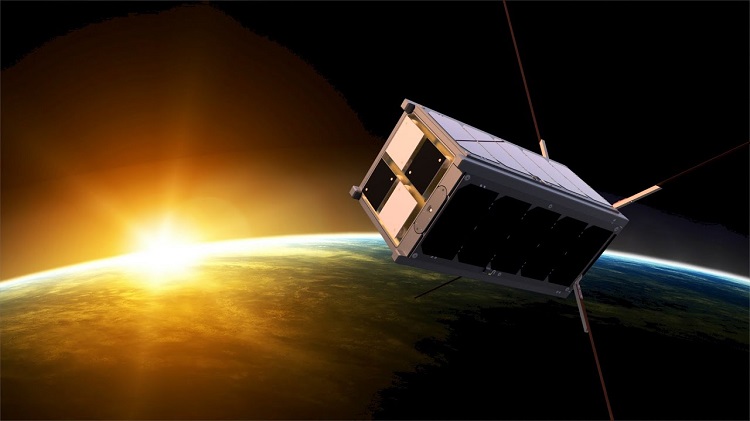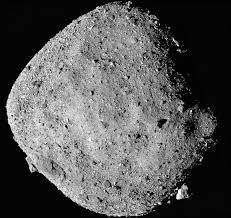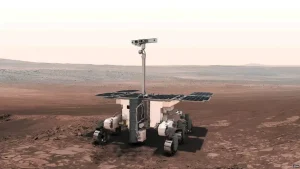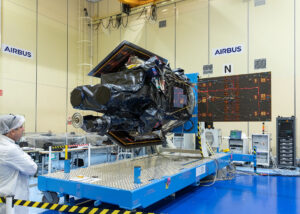Ireland’s First Ever Satellite, EIRSAT-1, Was Successfully Launched By Space-X Falcon-9
28th Nov 2023
EIRSAT-1, the Educational Irish Research Satellite, was successfully launched from Vandenberg Space Force Base in California on Friday, 1 December. The tiny satellite, measuring just 10.7cm x 10.7cm x 22.7cm, hitched a ride on a Space-X Falcon-9 launcher. This launch is a significant achievement for Ireland as it marks the country’s first-ever satellite.
EIRSAT-1, positioned in low Earth orbit, is set to conduct three primary experiments, all designed and constructed entirely by the student team. GMOD serves as a detector for studying gamma-ray bursts, the most luminous explosions in the universe, occurring during the death of a massive star or the collision of two stars. EMOD aims to observe how a thermal treatment protects a satellite’s surface in the space environment. WBC is focused on testing a novel method that utilizes Earth’s magnetic field to alter a satellite’s orientation in space.
After deploying EIRSAT-1 into orbit, the student team will try to establish communication with the satellite.
UCD Students Build CubeSat for Gamma-Ray Astronomy Under ESA’s FYS Program
University College Dublin students built the Educational Irish Research Satellite 1 under the guidance and supervision of ESA Academy’s Fly Your Satellite! Program. This project is an initiative aimed at providing teams of university students with the necessary support to build their own satellites.
The proposal to create a CubeSat for gamma-ray astronomy was first approved as part of the second cycle of FYS. Following approval, the project, spearheaded by University College Dublin School of Physics and College of Engineering students, began in 2017.
The CubeSat is a 2-unit satellite equipped with three payloads, or in other words, experiments. The primary payload, GMOD (Gamma-Ray Module), functions as a gamma-ray detector designed to study gamma-ray bursts, i.e., the most luminescent explosions in the universe.
The CubeSat also carries two secondary payloads, one of which is a study on thermal coatings for satellites, while the other is an alternate to control spacecraft orientation.
“University College Dublin has immense expertise in the domains of space science of astrophysics, and with EIRSAT-1, they overcame the challenges of a very complex engineering project,” stated ESA Academy head Joost Vanreusel.
“And that’s what made it a very appealing project for the Fly Your Satellite! educational program: the combination of the scientific expertise at the university with ESA’s experience and expertise in the building and testing of small spacecraft,” he added.
Preparations for the Launch of EIRSAT-1
Throughout the last six years, the students have collaborated with ESA professionals to construct the satellite and have joined test campaigns at various ESA sites to further the mission. A primary objective of the Fly Your Satellite! program also involves exposing students to a space mission’s complete life cycle.
Being the first-ever satellite for Ireland, EIRSAT-1 was also susceptible to unprecedented regulatory challenges. To avoid any obstacles, ESA closely cooperated with Irish authorities to establish the satellite as the country’s inaugural satellite.
To assist the project, the student team also took specialized spacecraft communications as well as other practical courses at ESA Academy’s Training and Learning Centre in Belgium and the European Space Operations Centre in Germany.
Along the way, the team has constructed crucial space infrastructure at UCD, such as a cleanroom and Mission Control, where students have been receiving in-depth training on operating EIRSAT-1 after it enters orbit.
The launch of the Space X Falcon 9 rocket carrying the satellite is scheduled for the end of November at the Vandenberg Airforce Base in California, USA. The satellite has already departed from Ireland towards its launch destination.







Thank you for your comment! It will be visible on the site after moderation.